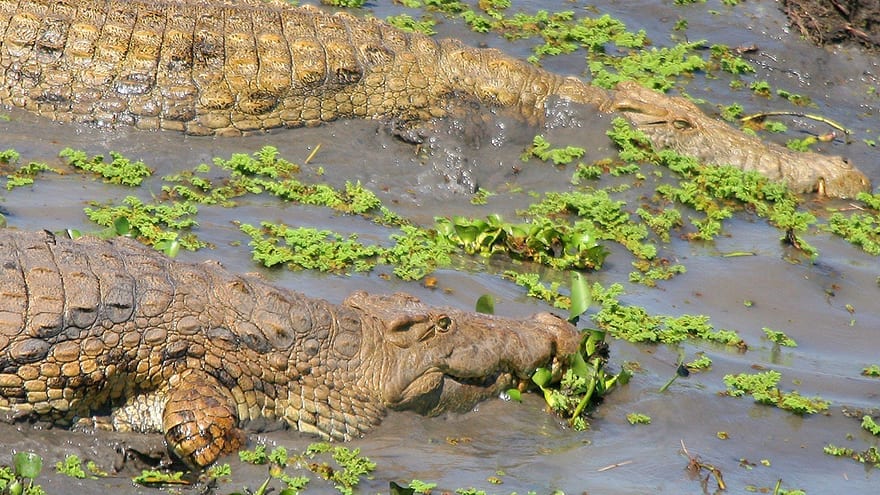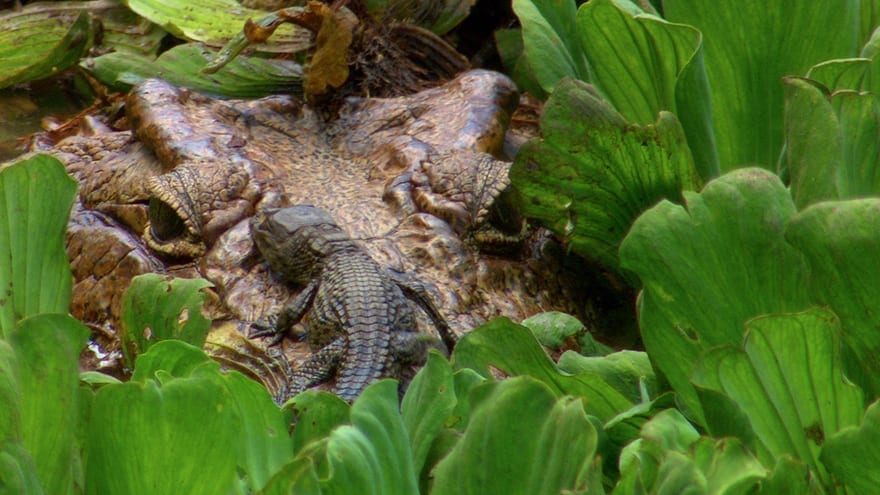Crocs
Whether you love them or hate them, whether you dream about them or have nightmares about them, Gorongosa has lots and lots of crocs! Lake Urema and its network of rivers and lagoons are the perfect home for Africa’s biggest, and most feared, predator – the Nile Crocodile.
No one really knows how many crocs we have in Gorongosa but it’s probably in the thousands. Some people think the biggest croc in Africa could be hanging out on the shores of Lake Urema. (If you see a six-meter croc, please take a photo for us!)

Role in the Ecosystem
Whatever you think of them, crocs play an important role in Gorongosa’s ecosystem. As the apex predator in our rivers and lakes, it plays an important “stabilizer” role. It keeps the population of predatory fish species in check. If crocs didn’t exist in Gorongosa, the number of Barbel catfish would explode and push other fish species to the brink of extinction by overeating them. The entire ecosystem would be thrown off balance and everything in the aquatic food chain would be affected. Predatory birds like pelicans and storks, for example, would have nothing to eat. The aquatic ecosystem would collapse without crocs.
Occasionally, crocs get a chance to eat other prey. When dry season comes, thirsty animals must venture close to croc-filled pools to drink. Those that are too slow or too careless don’t return. One of the amazing photos above shows a croc capturing a warthog by the Mussicadzi River during dry season in Gorongosa.
Migration & Hibernation
Crocodiles like to stay in the same place but when dry season comes they have no choice but to pack up and leave. At the onset of dry season, the crocs in Gorongosa can sometimes be seen leaving the rivers and walking towards Lake Urema, which never dries up. It’s a truly bizarre sight to see a croc walking across the flood plain!
Some crocs choose to sit out the dry season rather than migrate to the lake. At the Sungue River, crocs dig burrows in the soft riverbed. The mud eventually dries around them and encases them for the dry season. Occasionally, all you can see is an eye peeking out of the mud! This is a process similar to hibernation called ‘estivation’. Deep beneath the mud, they can survive for three or four months without water. When the rains finally come, they emerge for a long, refreshing shower!


Croc Family Values
The dry season is also the time for breeding. Despite their rather fearsome reputation, crocs do have a softer side! Most reptiles lay their eggs and leave them for good. Nile crocs, on the other hand, guard their nests diligently for three months and try to make sure their little hatchlings aren’t dug up and devoured by hungry monitor lizards.
The eggs develop in a nest 50cm below the warm sand. The temperature at which the eggs incubate will determine what sex the hatchlings are: below 31 degrees Celsius will produce females; temperatures above 31 to 34 degrees will produce males
After 3 months, at the start of the wet season, the hatchlings start squeaking in their eggs beneath the sand. This is the mother croc’s cue to dig up her young, gather them in her mouth, and bring them down to the river. On the Mussicadzi River, in late November or early December, if you are very stealthy, you can see big groups of hatchlings (50+) hanging around their mother for protection. There are many predators that would like to eat them. But, as long as they stay close to Big Mama, they’ll be ok!